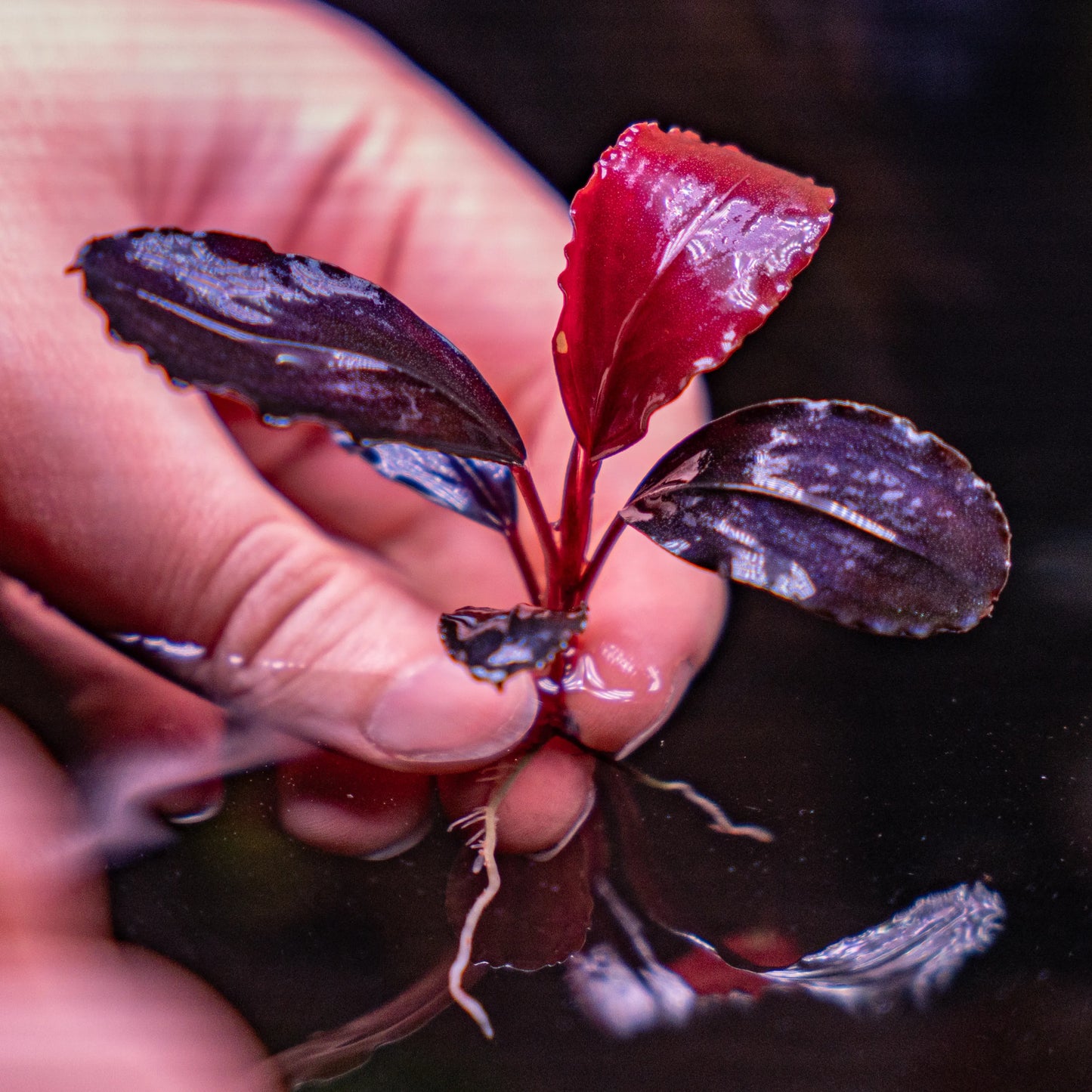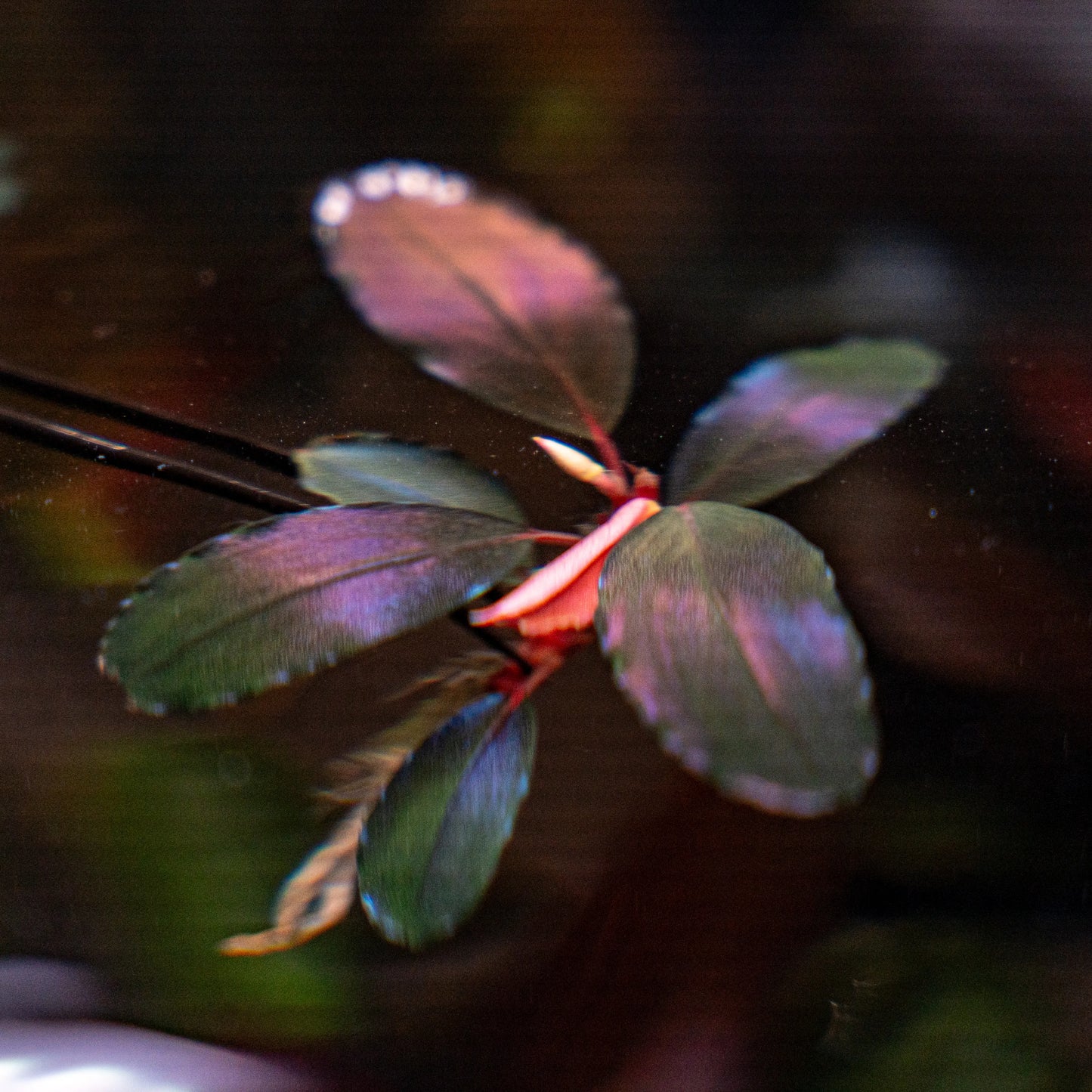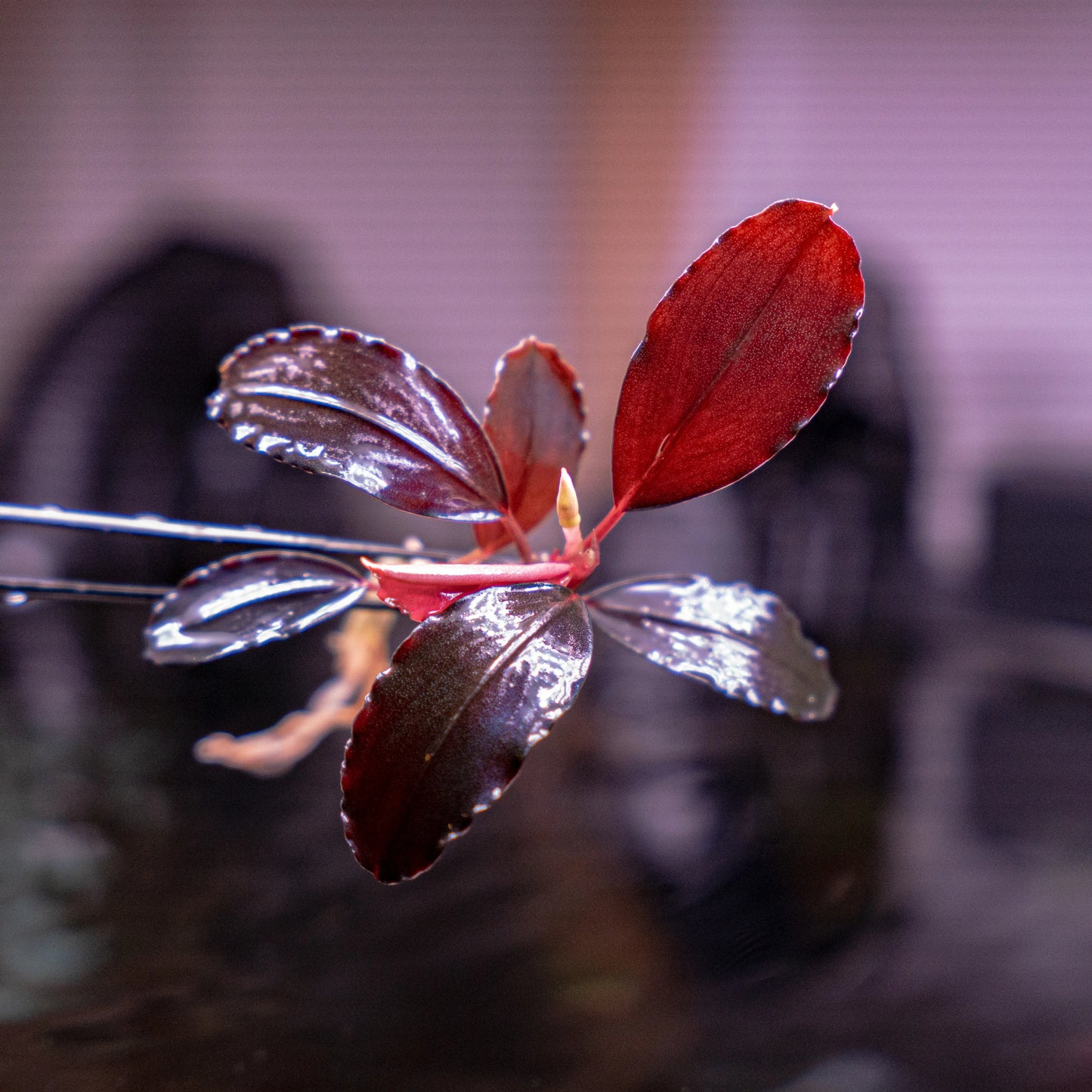Bucephalandra Devil King
Bucephalandra Devil King
Couldn't load pickup availability
The Devil King is an extremely rare variant of Bucephalandra, which is seldom available in the Australian aquarium hobby. The defining feature of the Devil King is its rich colouration, ranging from strong reds on new leaves to dark purple hues on established foliage, especially under good lighting conditions. The leaves of this variety are typically medium-sized, with a slightly wavy edge. Its compact growth habit and impressive colour make it an ideal focal point.
Portion Size
Portion Size
You will receive a plant that is similar to our showcase pictures.
Care Requirements
Care Requirements
- Light: While Buce in general are lower light plants, we would recommend to keep Devil King in moderate light to accentuate its colouration. High light levels are even better given you are able to keep an appropriate balance in the aquarium to prevent algae.
- Water Parameters: Keep Devil King within 21 and 27 degrees celsius. PH can range anywhere between 6.0 and 8.0 and maintain good water circulation.
- CO2 Needs: CO2 supplementation is not required but is recommended to help this plant achieve its full potential. It will significantly boost the plant’s growth rate and enhance colouration, helping it display its most vibrant reds and purples.
Maintenance: We recommend keeping the leaves clean of debris to prevent buildup of algae and biofilm. Devil King will benefit from liquid fertilisation.
Placement
Placement
Like other rhizome plants, it is crucial not to bury the rhizome in the substrate as this can cause the plant to rot. Devil King is best attached to hardscape using a minimal amount of aquarium-safe glue, thread or simply wedging it in position.
It can be grown in the substrate provided that the rhizome sits above the substrate. Napad products can help you grow your Devil King on the substrate where it can uptake more nutrients from aquasoil. Check out Napad here.
Propagation
Propagation
Propagating Devil King is straightforward and involves simply cutting the rhizome into pieces with a clean, sharp pair of scissors. Each separated rhizome should have some leaves attached to it.
Share






